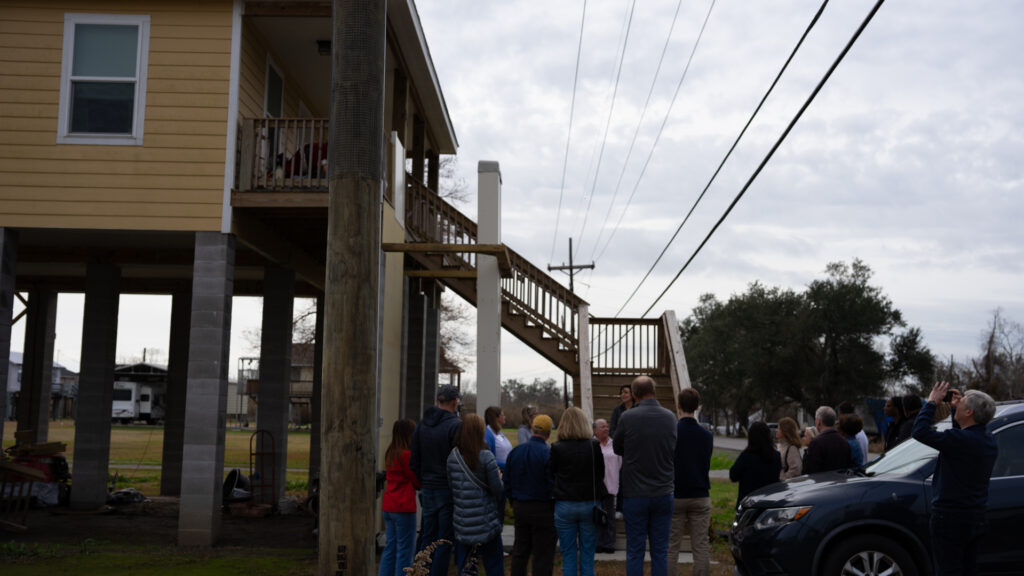This post was submitted as part of our “You Said It” program.” Your voice, ideas, and engagement are important to help us accomplish our mission. We encourage you to share your ideas and efforts to make the world a better place by submitting a “You Said It.”
As a member of the American Red Cross Climate Crisis Task Force, I have the privilege of working alongside dedicated experts who are committed to addressing the increasing impacts of climate-related disasters. Recently, I had the opportunity to witness firsthand how the Red Cross is helping communities adapt and build resilience through its Community Adaptation Program (CAP).

The CAP is a groundbreaking initiative by the Red Cross that strengthens local nonprofit organizations in vulnerable communities across the country. By forging community partnerships in areas at high risk for disasters, the program helps expand access to essential services such as disaster casework, food security, and safe housing.
To date, the Red Cross has invested in 19 local communities, ensuring they have the resources to prepare for and recover from disasters more effectively. In the first three years, the CAP served an additional 175,000 people through the Red Cross’ partnerships with nearly 300 organizations across the country.
Seeing Disaster and Change Firsthand

Along with several Red Cross supporters, I traveled to Terrebonne Parish, Louisiana, one of the communities benefiting from CAP support. This region has faced repeated devastation from hurricanes like Ida and Francine, leaving families struggling to rebuild their lives. The trip provided a powerful glimpse into how local partnerships are making a tangible difference.

We met with a tribal leader, Elder Chief Shirell Parfair-Dardar, at the Lowland Center, where CAP support has enhanced disaster casework services, ensuring that community members receive the assistance they need after a disaster.
We also visited a homeowner, Ms. Christine Billiot, whose trailer was destroyed in a recent hurricane. Thanks to CAP funding and a partnership with the Bayou Community Foundation, she now has a safe, elevated home built to withstand future disasters.

Another stop on our trip was the Terrebonne Churches United Food Bank, which has expanded its capacity to serve more people before, during, and after disasters with support from the Red Cross. Seeing volunteers in action underscored the importance of investing in local organizations that already have strong community ties.

The trip concluded with a gathering of local nonprofit partners, including CHeriSH Times Two, Helping All People, Teche Action Clinic, and Sisters of Strength and Knowledge. Their stories illustrated how collaboration between national organizations like the Red Cross and local grassroots groups can create lasting change.
Power Beyond Partnerships

Beyond these powerful partnerships, the Red Cross is also finding new ways to strengthen community resilience. As part of CAP, several legacy Red Cross Emergency Response Vehicles (ERVs) have been refurbished and donated to local partners. These vehicles are expanding critical services such as food distribution with NO1hungryinEHC Inc. in New Jersey, mobile medical care with On The Spot Aid in Florida, and disaster relief efforts with organizations like Women In Training Inc. in Alabama. These ERVs, once vital to the Red Cross disaster response, are now helping grassroots organizations reach more people in need. As highlighted by Neil Brockway, Senior Director of Disaster Risk Reduction at the American Red Cross, multiple states can already feel their impact.
My experience in Terrebonne Parish reaffirmed my belief in the power of community-driven solutions. The Red Cross Community Adaptation Program is not just about responding to disasters—it’s about proactively strengthening communities so they are better equipped to face future challenges. As climate-related disasters become more frequent and severe, this kind of investment is more critical than ever.
How to Help
Consider joining the Red Cross’s mission to build more resilient communities. Your support enables the Red Cross to invest in vital programs like the CAP, helping families prepare for and recover from disasters. Donate today to make a lasting impact.


